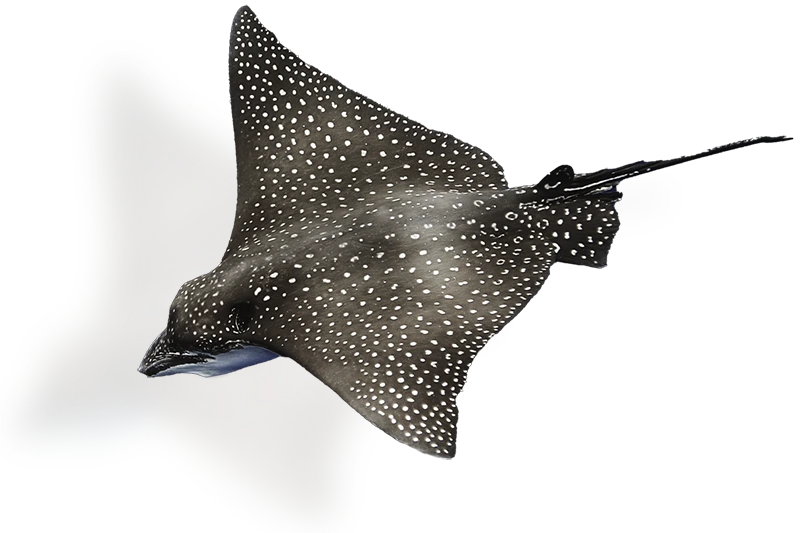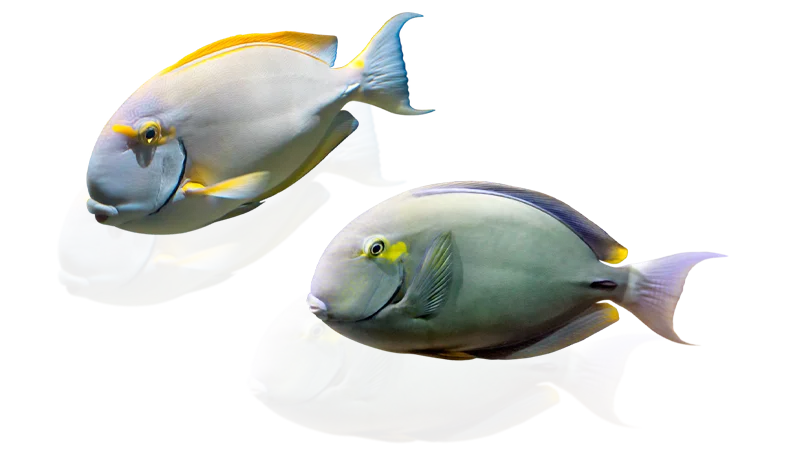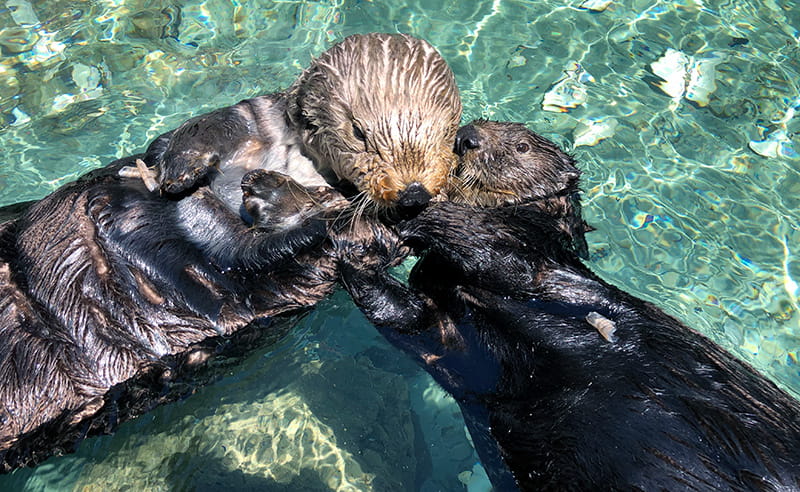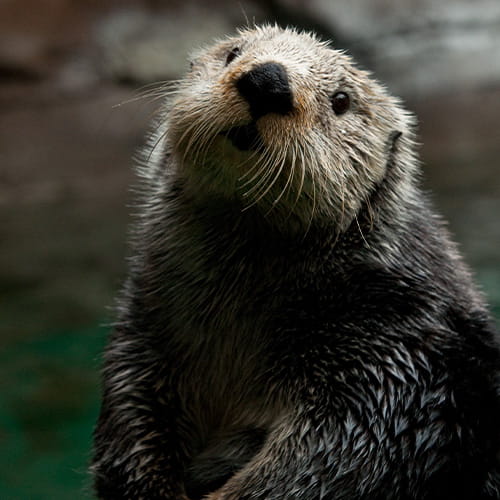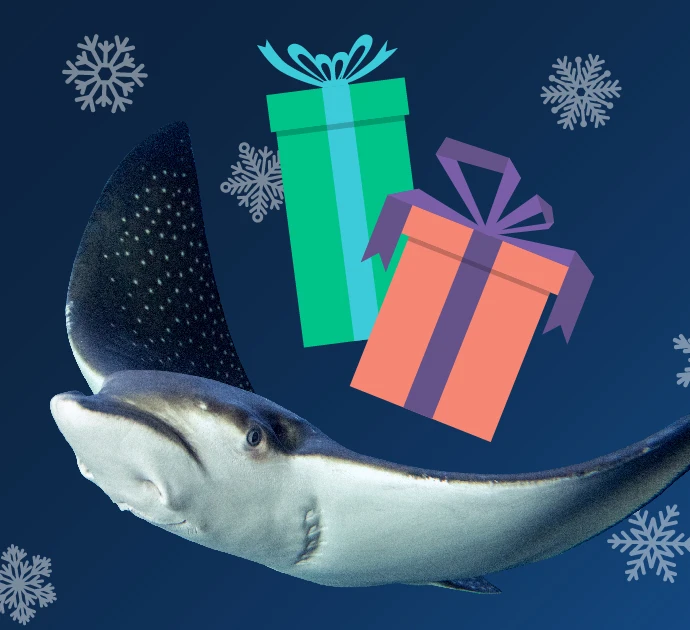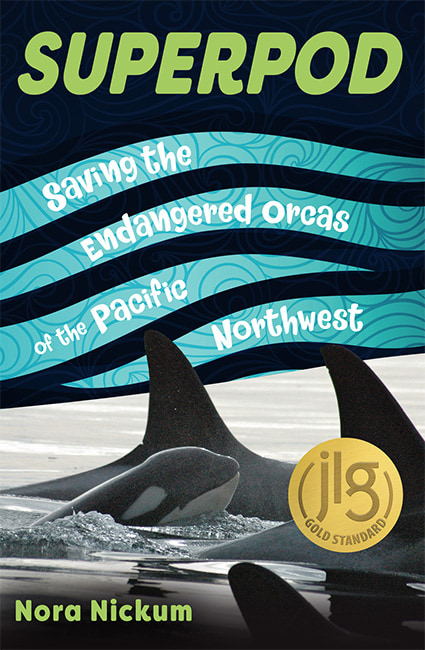
Join us for a book event on Sunday, April 16, 2023, to ask Nora some questions of your own and get a signed copy!
You can also pick up a copy at our gift shop the next time you visit us at the Aquarium, or order it from the Aquarium gift shop online or your local independent bookstore.
There’s a new book for kids ages 8–12+ about the amazing southern resident orcas, and it’s written by Nora Nickum, who leads our ocean policy program! Superpod: Saving the Endangered Orcas of the Pacific Northwest comes out April 11 from Chicago Review Press.
We asked Nora what she discovered about these iconic whales in the process of writing the book, what you’ll find in its pages, and what the Seattle Aquarium is doing to help these orcas recover.
You’ve been working on orca recovery for a long time. What’s something new you learned while doing the research for this book?
I learned that orcas are born tail-first! Their tails are floppy to start with. Getting the tail out first means it can harden in the cool water so the baby orca can use it right away to swim up to the surface for a breath of air.
I also had fun talking with Dr. Bob Otis about why orcas breach (jump out of the water). It turns out it’s still something of a mystery, but there are enough clues from his years of research that I was able to guess what was happening the time I saw an up-close breach from shore at Lime Kiln Point State Park.
Did you get to go on some fun field trips while you were writing Superpod?
Yes! I interviewed a lot of dedicated people who are working to help the orcas, and they do their work in amazing places, so I tagged along whenever possible. I went out on a boat with Dr. Deborah Giles and Eba, the scat-sniffing dog, from Wild Orca as they collected scat samples from transient orcas (see Eba in action in this video from the Seattle Aquarium!).
I also visited scientists working in a lighthouse, stopped by the Whale Trail site at Alki Beach, and went to a few spots along the Cedar River where Seattle Aquarium volunteer naturalists helped me catch glimpses of spawning Chinook salmon. I highly recommend that readers check out Whale Trail sites in the region and participate in the Cedar River Salmon Journey this fall!
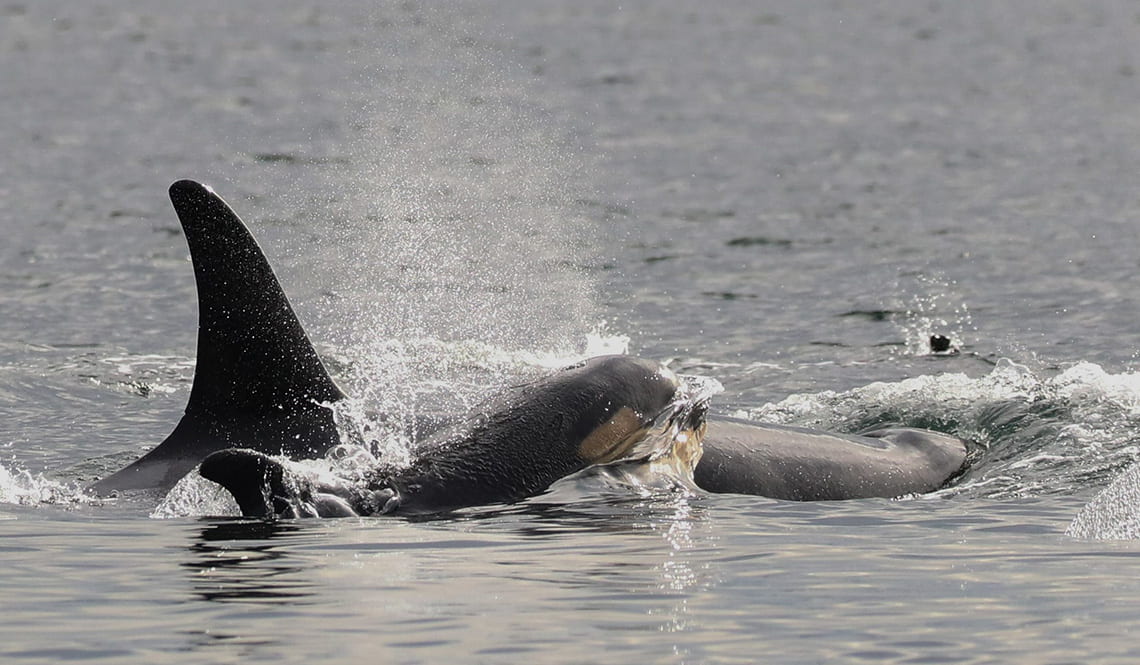
There are some cool photos in Superpod—exuberant breaches, a transient orca flinging a seal pelt, and amazingly close encounters with shore-based whale-watchers. How did you gather all those pictures, and do you have a favorite?
I do love those! Some of my other favorite photos were taken by scientists from the air, showing orcas playing together and chasing salmon underwater. Those aerial photos are like a window into a fascinating and usually unseen social life beneath the waves.
I was so lucky to find scientists and talented photographers who were willing to share their images (one was Danielle Carter, who worked for the Seattle Aquarium for many years), and to be able to use public images from the Washington state archives and NOAA. It was important to list the NMFS permit numbers associated with many of the photos—researchers get permits that allow them to get a little closer than other boaters can, and to take photos while they’re there.
You lead policy work for the Seattle Aquarium. How can policy advocacy help the orcas? And what can readers do?
There are so many things we can each do to help restore the Salish Sea and protect the orcas, like choosing sustainable seafood, following Be Whale Wise guidelines and giving the orcas as much space as possible when boating, and picking up litter at the beach. But policy change is also important because it can make large-scale improvements happen faster. We’ve been advocating for state and federal funding to restore salmon habitat; policies to protect kelp and nearshore ecosystems that support forage fish and salmon; changes in boating regulations to quiet the waters so orcas can communicate and forage more successfully; and measures to reduce toxic pollution. Readers—and Aquarium guests—can join us in raising our voices for these kinds of policies and find lots of other action ideas in the book.
